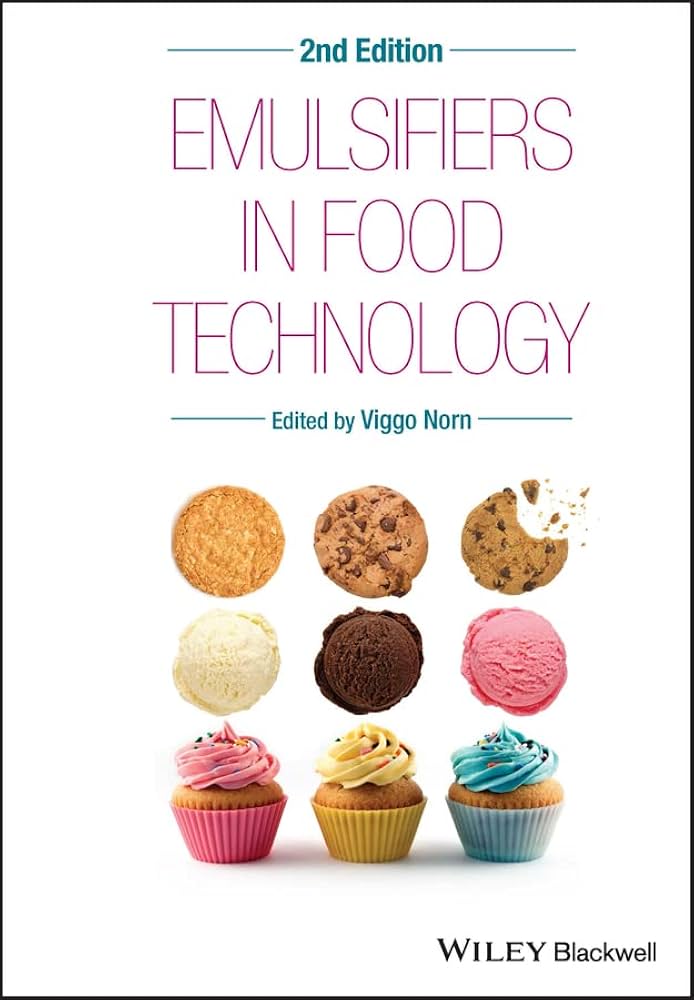Using Emulsifier In Food to Improve Plating Style
All Concerning the Function of an Emulsifier in Food and Its Importance in Modern Cuisine
Emulsifiers are crucial in modern cuisine, promoting the blend of immiscible liquids like oil and water. Their capability to support combinations boosts the structure and taste of numerous foodstuff. From salad dressings to baked products, emulsifiers play a significant role in both industrial and home food preparation. Yet, the science behind their function and the future technologies in their use continue to be less discovered. Emulsifier In Food. What extra could be unearthed concerning these vital culinary representatives?
Comprehending Emulsification: The Science Behind the Process
Although emulsification might feel like a simple culinary strategy, it includes intricate scientific concepts that are necessary for producing secure mixes of immiscible fluids, such as oil and water. At the heart of this process lies the principle of surface area tension, which protects against both fluids from blending naturally. Emulsifiers, substances that decrease surface stress, play an essential function in facilitating the combination of these liquids. They have both hydrophilic (water-attracting) and hydrophobic (water-repelling) residential or commercial properties, enabling them to secure themselves at the user interface between oil and water.
When an emulsifier is introduced and the blend is perturbed, it forms a protective obstacle around spread beads of one fluid within the various other, maintaining the mixture. This action not only improves structure and mouthfeel in food items however also contributes to their visual appeal. Emulsifier In Food. Comprehending the scientific research behind emulsification is basic in modern-day food, permitting cooks to develop a selection of sauces, dressings, and emulsified recipes
Usual Sorts Of Emulsifiers Used in Food
Emulsifiers are vital active ingredients in the food market, playing a vital function in supporting combinations of oil and water. Numerous kinds of emulsifiers are typically used, each with unique homes suited for various applications. Lecithin, originated from soybeans or egg yolks, is one of the most popular all-natural emulsifiers, usually discovered in chocolates and dressings. Mono- and diglycerides, which are acquired from glycerol and fatty acids, are commonly made use of in baked products and margarine to boost structure and expand life span. Another usual emulsifier is polysorbate 80, favored for its capability to enhance the uniformity of gelato and sauces. In addition, xanthan gum and guar gum tissue serve as thickening representatives that also contribute to emulsification in gluten-free products. These emulsifiers are important to creating a steady, tasty product in modern-day food formulations, making certain an enjoyable sensory experience for customers.
The Role of Emulsifiers in Different Food Products
A selection of food rely upon emulsifiers to achieve preferred structures and stability. These materials help with the blending of immiscible liquids, such as oil and water, which is important in lots of refined foods. In salad dressings, emulsifiers help keep a consistent mix, stopping splitting up and enhancing shelf life. In baked goods, they add to a consistent crumb framework and moisture retention, improving general quality.
Emulsifiers also play a considerable function in milk products, such as ice cream and yogurt, where they stabilize fat globules, making sure a smooth mouthfeel. Additionally, in condiments and sauces, they enhance viscosity and enhance spreadability. This capability is essential in the manufacturing of delicious chocolates, margarine, and mayo, where a cohesive product is required. Overall, the use of emulsifiers in different food is essential to contemporary food production, improving stability and consistency throughout a variety of things.
Exactly How Emulsifiers Enhance Texture and Flavor

When incorporated right into food products, emulsifiers significantly enhance both appearance and taste, developing an even more pleasurable consuming experience. These materials promote the mixing of ingredients that typically do not blend well, such as oil and water, causing a smoother, creamier consistency. This not just enhances mouthfeel yet additionally enables tastes to distribute uniformly throughout the product, amplifying the total taste.

Emulsifiers in Home Food Preparation: Tips and Techniques
Just how can home chefs effectively utilize emulsifiers to enhance their dishes? Emulsifiers play a Recommended Reading crucial function in accomplishing desirable textures and flavors in homemade recipes. For example, using egg yolks in mayonnaise or hollandaise sauce enables a stable emulsion, combining oil and water effectively. Home chefs can likewise try out mustard, which functions as an emulsifier in vinaigrettes, making certain a smooth uniformity.
In baking, incorporating lecithin, found in egg yolks or soy, can enhance dough stability and dampness retention. In addition, using industrial emulsifiers like xanthan periodontal or guar periodontal can help thicken sauces and dressings while maintaining a creamy mouthfeel.
When developing ice creams or whipped toppings, emulsifiers can stop ice crystal formation, resulting in a smoother appearance. By grasping these strategies, home cooks can considerably raise their culinary developments, providing satisfying and constant recipes that display the power of emulsification.
The Future of Emulsifiers in Culinary Innovation
As the culinary world remains to develop, the duty of emulsifiers is poised to come to be varied and progressively innovative. Developments in food science are causing the development of brand-new emulsifying representatives stemmed from all-natural sources, which satisfy health-conscious consumers and enhance the sensory qualities of recipes. Technologies such as plant-based emulsifiers are acquiring grip, permitting cooks to create vegan and allergen-free choices without endangering texture or flavor.
In addition, making use of emulsifiers in molecular gastronomy is broadening, making it possible for chefs to explore special appearances and presentations that mesmerize diners. As sustainability comes to be a priority, the future may see a shift in the direction of green emulsifiers that decrease environmental influence.
Eventually, emulsifiers will remain to play an essential duty click here to find out more in culinary innovation, connecting the space in between practice and modernity, and enabling cooks to press the boundaries of creativity in their cooking areas.
Often Asked Concerns

Are Emulsifiers Safe for Individuals With Allergies?
Emulsifiers can be safe for people with allergic reactions, depending upon their certain sensitivities. Particular emulsifiers, obtained from allergenic sources like soy or eggs, might trigger reactions, demanding cautious ingredient analysis and assessment with healthcare specialists.
How Do Emulsifiers Influence Food Life Span?
Emulsifiers enhance food rack life by stabilizing blends, avoiding splitting up, and decreasing microbial development. This stability aids keep appearance and flavor gradually, allowing items to remain safe and appealing for intake much longer than without emulsifiers.
Can Emulsifiers Be Derived From Natural Resources?
Yes, emulsifiers can be originated from all-natural sources such as plants, eggs, and milk items (Emulsifier In Food). These natural emulsifiers help maintain mixes, boosting texture and consistency in numerous food applications while being chosen for health-conscious customers
What Are the Ecological Impacts of Emulsifier Production?
The ecological impacts of emulsifier production include resource deficiency, habitat destruction, and have a peek at these guys contamination from artificial procedures. Natural emulsifier sourcing can reduce some impacts, yet on the whole, industrial methods still posture substantial ecological challenges to ecological communities worldwide.

Are There Vegan Emulsifiers Available in the Market?
Yes, there are several vegan emulsifiers available in the marketplace, such as lecithin originated from soy or sunflower, guar gum, and xanthan gum tissue. These choices cater to plant-based diets without endangering emulsifying properties.
Emulsifiers are essential active ingredients in the food sector, playing an important role in maintaining blends of oil and water. A range of food items rely on emulsifiers to attain desired textures and stability. When integrated into food items, emulsifiers considerably improve both texture and taste, producing a more delightful eating experience. Additionally, emulsifiers can maintain air pockets in whipped products like mousses and creams, leading to a light and ventilated appearance. Emulsifiers boost food shelf life by maintaining mixes, protecting against splitting up, and minimizing microbial development.